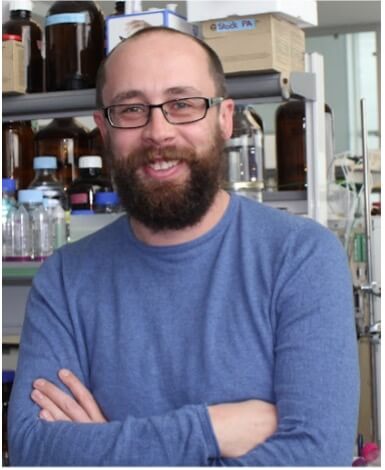<< Back to MOTIFvations Blog Home Page
The Intertwined Lives of SIRT6, DNA Damage Repair, and Longevity

April 25, 2023
Table of Contents:
-
Introduction
-
Linking SIRT6 and LINE-1 Activity to Age-related Inflammation
-
SIRT6 Supercharges DNA Repair in Species with Longer Lifespans
-
SIRT6-Mediated Crosstalk Between Transcription and DNA Repair Machineries Promotes Genome Stability and Longevity
-
SIRT6 Helps Short-term Calorie Restriction to Enhance DNA Repair
-
A Centenarian SIRT6 Variant Displays an Enhanced Interaction with a Nuclear Scaffold Protein
-
SIRT6 and Longevity: More Reading
Introduction
Sirtuin 6 (SIRT6 or Sirt6) is a histone deacetylase and mono-ADP ribosyl transferase critically involved in various normal cellular processes. Perhaps most interestingly, research has revealed a link between SIRT6 and longevity (Kanfi et al.), which may result from the involvement of SIRT6 in maintaining genome stability via enhanced DNA repair (Mostoslavsky et al. and Mao et al., Toiber et al.) and the epigenetic silencing of potentially harmful repetitive elements (Van Meter et al.).
A veritable flood of papers from the laboratories of Yousin Suh (Columbia University), Andrei Seluanov (University of Rochester), and Vera Gorbunova (University of Rochester) (check out The Gorbunova & Seluanov Laboratory page, too!) recently described the continuing exploration of the intertwined lives of SIRT6, DNA damage repair, epigenetics, and longevity. Here, we bring you a recent history of this exciting research!
Linking SIRT6 and LINE-1 Activity to Age-related Inflammation
The activity of the LINE-1 transposable element may contribute to age-related disease development (Hancks and Kazazian) thanks to the DNA damage induced by replication and expansion within a host genome. Epigenetic silencing mechanisms become less efficient during aging (De Cecco et al. and Van Meter et al.), which may prompt increased LINE-1 activity and innate immune response-mediated inflammation (Thomas et al. and Van Meter et al.). Interestingly, SIRT6 interacts with epigenetic modifiers to silence LINE-1 elements, and SIRT6-deficiency induces premature aging (including a shortened lifespan) alongside LINE-1 activation, genomic instability, and DNA damage (Mostoslavsky et al. and Van Meter et al.).
These findings prompted a study by Simon et al., who employed SIRT6 knockout to decipher the role LINE--1 plays during aging. SIRT6 knockout mouse cells/tissues displayed elevated levels of DNA damage and cytoplasmic LINE-1 cDNA, with the latter triggering an interferon response via the cGAS pathway to drive inflammatory gene expression. Interestingly, the authors observed the same responses in aged wild-type mouse cells, suggesting that age-related loss of SIRT6 function may induce increased LINE-1 activity, DNA damage, and inflammatory processes to induce other hallmarks of aging. When employing nucleoside reverse-transcriptase inhibitors (NRTIs) to constrain LINE-1 retro transposition, the authors observed downregulated interferon responses and reduced DNA damage in SIRT6 knockout cells in culture and extended lifespan and improved health in SIRT6 knockout mice. Of note, RNA interference-mediated knockdown of LINE-1 recapitulated the results observed with NRTIs.
These data suggest that LINE-1 activity contributes to the aging-associated pathologies observed in SIRT6 knockout mice via increased genomic instability and the "sterile inflammation" associated with aging (López-Otín et al.). While modulating LINE-1 activity can potentially attenuate age-related pathologies, NRTIs suffer from notable unwanted side effects. As an alternative, SIRT6 activators may represent a means of counteracting the age-related increase in LINE-1 activity.
SIRT6 Supercharges DNA Repair in Species with Longer Lifespans
Significant differences in maximum lifespans in mammals (Tacutu et al.) may result from different rates of DNA repair, as mutations in DNA repair genes can result in accelerated aging-like phenotypes (Hasty et al.). Tian et al. investigated the potential differential regulation of DNA repair pathways in long-lived species to maintain genomic stability by concentrating on SIRT6 in primary fibroblasts isolated from rodent species with diverse maximum lifespans (Gorbunova et al.).
The authors discovered that DNA double-strand break (DSB) repair efficiency (via homologous recombination and non-homologous end joining [NHEJ]) coevolved with maximum lifespan in rodents; furthermore, the differing capacity of SIRT6 to stimulate DSB repair accounted for a significant proportion of the variation in efficacy between short- and long-lived species. The team highlighted five amino acids that mediated the differential activities of the "weak" mouse SIRT6 (short lifespan) and the comparatively "strong" beaver SIRT6 (long lifespan) proteins; overall, stronger SIRT6 activity associated with longer lifespans. The five amino acid replacements affected both deacetylation and mono-ADP ribosylation, although mono-ADP ribosylation activity (linked to DNA repair) appeared to contribute more significantly to lifespan than deacetylase activity (linked to gene regulation). Fascinatingly, introducing the beaver SIRT6 into Drosophila conferred a longer lifespan than mouse SIRT6, indicating that SIRT6 activity directly contributes to lifespan extension.
DSBs can lead to severe consequences (cell cycle arrest and cell death), while incomplete/incorrect repair can induce changes to genome organization by altering higher-order chromatin structure; therefore, efficient repair mechanisms (supercharged by high-level SIRT6 activity) could support extended lifespans. Therefore, pharmacological interventions that modulate SIRT6 activity could improve DSB repair (and extend lifespan?) and delay the onset of age-related diseases.
SIRT6-Mediated Crosstalk Between Transcription and DNA Repair Machineries Promotes Genome Stability and Longevity
In a following study, Rezazadeh et al. explored how SIRT6-supercharged DNA repair promotes genome stability and longevity by exploring the interaction between the transcriptional and DNA repair machinery in a chromatin context. Previous studies had shown that SIRT6 promoted NHEJ repair by the mono-ADP-ribosylation of PARP1 (Mao et al.); here, they sought to discover whether SIRT6 targeted other chromatin- or DNA repair-associated factors with this modification.
Initial studies employing mass spectrometry followed by mutagenesis revealed that SIRT6 mono-ADP-ribosylated the lysine demethylase JHDM1A/KDM2A, which catalyzes the removal of methyl groups from H3K36me2 to form H3K36me1 (Wagner and Carpenter), following DNA damage. KDM2A modification prompts displacement from broken chromatin (while not affecting demethylation), which prompts a general increase in H3K36me2 levels surrounding the transcription start sites near the site of DNA damage. This chromatin profile subsequently promotes HP1α binding, H3K9 methyltransferase recruitment, and an increase in levels of the gene silencing-associated H3K9me3 modification, which transiently suppresses transcription initiation by RNA polymerase II and the recruitment of NHEJ factors for efficient repair.
These findings suggest that SIRT6 prevents transcription through sites of DNA damage to support high-efficiency repair (ensuring genome stability and promoting longevity) and confirm a role for H3K36me2 in preserving transcriptional fidelity.
SIRT6 Helps Short-term Calorie Restriction to Enhance DNA Repair
Calorie restriction (CR) improves health, reduces cancer incidence, and, importantly, extends lifespan in multiple organisms (Fontana et al., Mattson, and Weindruch and Walford), perhaps through a link between long-term CR and enhanced NHEJ (Lee et al. and Um et al.). Given this data, Ke et al. explored links between CR and DSB repair in a knock-in reporter mouse that allows the quantitative measurement of NHEJ efficiency in vivo (Vaidya et al.). Does SIRT6 also play a role?
The authors discovered that short-term CR (four weeks) in young mice significantly increased NHEJ efficiency in skin, lung, kidney, and brain tissues compared to control ad libitum-fed mice; interestingly, this increase was accompanied by elevated levels of SIRT6 expression. These data suggest that short-term CR (or intermittent fasting) may benefit DNA repair and hence DNA damage levels, genome stability, general health, and maximum lifespan, while SIRT6 again appears as a central player. Can short-term CR induce these beneficial effects in humans?
A Centenarian SIRT6 Variant Displays an Enhanced Interaction with a Nuclear Scaffold Protein
Mutations in the gene coding nuclear scaffold protein Lamin A/C (LMNA) prompt the onset of premature aging syndromes (De Sandre-Giovannoli et al. and Eriksson et al.). Interestingly, LMNA interacts with and activates SIRT6 in the nucleus (Ghosh et al.), which begs the question, can SIRT6 gene mutations also impact aging/longevity?
Simon et al. sequenced the SIRT6 gene locus in 450 Ashkenazi Jewish centenarians and 550 Ashkenazi Jewish individuals without a family history of exceptional longevity in the search for longevity-associated variants. Encouragingly, this approach revealed a link between a novel rare SIRT6 allele containing two linked substitutions (centSIRT6) and increased longevity. In line with earlier studies, centSIRT6 strongly repressed LINE-1 activity, enhanced DSB repair, induced greater resistance to oxidative stress, and displayed a greater cytotoxic effect on cancer cells than the wild-type SIRT6 allele. This altered functional profile may derive from a change in enzymatic activity, as the centSIRT6 protein possessed weaker histone deacetylase activity (an unexpected result) but more robust mono-ADP ribosylation activity. Finally, and perhaps most interestingly, the centSIRT6 protein interacted more strongly with LMNA, which prompted enhanced LMNA mono-ADP ribosylation. This novel interaction may support longevity by helping LMNA maintain heterochromatin structure within the nucleus and, therefore, LINE-1 silencing (Peric-Hupkes et al. and Zullo et al.); however, exactly how centSIRT6 and LMNA enhance genome stability and contribute to longevity remains incompletely understood.
Overall, this study underlines the link between SIRT6 activity and enhanced cellular functions linked to longevity; therefore, could small molecules designed to enhance SIRT6 ribosylase activity allow us all to reach the century mark?
SIRT6 and Longevity: More Reading
If this short recent history of SIRT6, DNA damage repair, and longevity has piqued your interest, be sure to check out the following resources:
- SIRT6 was the subject of a recent presentation at Chromatin-Con 2023: Epigenetics of Aging; watch all the videos from this exciting meeting here.
- Read more about epigenetic alterations and molecular targets in cell senescence, such as LINE-1, Sirtuins, EZH/PRC2, histones, DNA methylation, and more in our eBook
- See here for more information on Sirtuin-related products from Active Motif
About the author

Stuart P. Atkinson, Ph.D.
Stuart was born and grew up in the idyllic town of Lanark (Scotland). He later studied biochemistry at the University of Strathclyde in Glasgow (Scotland) before gaining his Ph.D. in medical oncology; his thesis described the epigenetic regulation of the telomerase gene promoters in cancer cells. Following Post-doctoral stays in Newcastle (England) and Valencia (Spain) where his varied research aims included the exploration of epigenetics in embryonic and induced pluripotent stem cells, Stuart moved into project management and scientific writing/editing where his current interests include polymer chemistry, cancer research, regenerative medicine, and epigenetics. While not glued to his laptop, Stuart enjoys exploring the Spanish mountains and coastlines (and everywhere in between) and the food and drink that it provides!
Contact Stuart on Twitter with any questions
Related Articles
African Turquoise Killifish – A Colorful Up-and-Coming Model in Aging Research!
February 7, 2023
The connection between epigenetics, cell senescence and aging continue to grow. As the field expands, so does the range of organisms we’re finding well-suited for the task. Here we present a roundup of all recent protocols and research concerning the African turquoise killifish and its potential as a model for aging. This up-and-coming model may be everything you need for your aging-based research.
Read More
DNA Methylation and Aging: Best of Friends, Worst of Enemies?
January 10, 2023
New research into links between DNA methylation, aging clocks, and Alzheimer’s disease. We look at two recent studies involving epigenetic clocks and epigenetic editing via CRISPR/Cas9 that further demonstrate the link between DNA methylation alterations and normal human aging.
Read More
Could Long-term, Partial Reprogramming our Cells Battle Aging and Give us “Good Genes”?
June 1, 2022
Researchers reveal that long-term partial reprogramming does battle against the signs of aging and helps wild-type mice go long into a healthy old age. Here’s hoping for human healthy aging on the inside as well as the outside!
Read More
<< Back to MOTIFvations Blog Home Page









